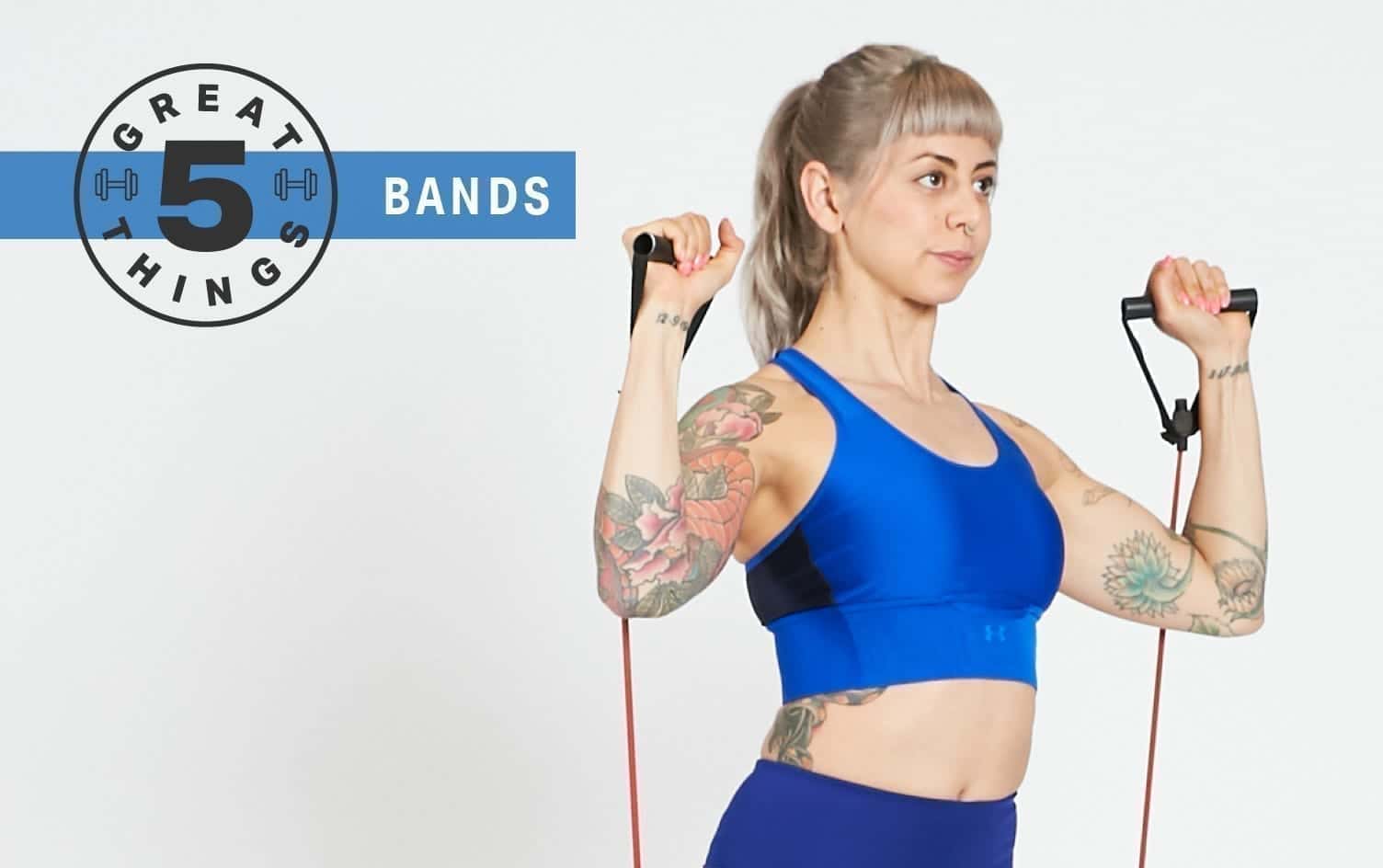If you’ve been resistant to adding resistance bands to your workout, you’re missing out. The lightweight bands offer a heavyweight workout that could leave you stronger, leaner and more flexible than strength training with traditional weights.
“Once you get the hang of them, they will become a staple in your workout routine,” says Joy Keller, a certified personal trainer and executive editor for the IDEA Health and Fitness Association.
Here are five science-backed reasons to add bands to your workouts:

Resistance bands are small but mighty pieces of exercise equipment. You can incorporate them into a warmup, strength-training workout or stretching routine — and, thanks to their size, you can take them from your living room to a hotel room so you never miss a workout.
The bands come in a range of tensions; beginners can use bands with less tension (or resistance) while experienced exercisers can choose bands with more resistance to make their workouts more challenging.
“One flat continuously looped resistance band has 40 pounds of resistance variability, which means for [the cost of one band] you can actually create 40 different levels of training resistance,” says physical therapist Dave Schmitz, owner of Resistance Band Training Systems. “Imagine the cost of having to purchase 40 different dumbbells or kettlebells.”

It doesn’t seem possible rubber bands weighing mere ounces could be powerful strength-training equipment. Bands might be more effective than dumbbells, especially when it comes to engaging ancillary muscles during moves like flies and reverse flies, according to 2018 research published in the Journal of Human Kinetics. The researchers suspect that, because bands add an element of instability, the ancillary muscles have to work harder to perform a move.
Keller believes bands are especially beneficial if you’re new to strength training. “Resistance bands are versatile and effective … can be easily combined with other pieces of equipment and used in many different exercise formats,” she explains. “I think they might be less intimidating than machines or dumbbells to some people.”

Using the malleable bands can help you improve your flexibility.
“Resistance bands add the benefit of dynamic feedback — as opposed to a regular, static yoga strap — which can help you ease into an intense stretch,” says Keller. “Bands can help you keep good form and go deeper into many important stretches to train flexibility incrementally and safely.”
A 12-week Pilates workout that included exercises using resistance bands helped women improve their balance and flexibility, according to research published in the Journal of Sports Science and Medicine.

If you’re recovering from an injury, resistance bands could be an important component of your rehabilitation.
Unlike free weights, which provide constant resistance, bands allow you to work your muscles at different speeds and resistance levels with multiple ranges of motion, notes Schmitz.
One study exploring the effectiveness of resistance bands in physical therapy found three sessions per week for four weeks improved balance and functional ability; additional research showed a home-based rehabilitation program helped those with knee osteoarthritis improve the functionality of their knees.

Strength training might not burn the same number of calories as a high-intensity cardio workout but at least one study found sedentary women who exercised with resistance bands decreased their fat mass, including their percentage of visceral fat, which is stored in the abdomen and increases the risk for certain diseases, including Type 2 diabetes.
For the biggest calorie burn, Keller suggests using resistance bands for compound movements that engage the upper and lower body such as squat overhead presses or squat rows, which get your heart rate up.
While bands are great for beginners, using them requires a little know-how. For starters, Keller suggests checking the bands for wear and tear before every workout; a band with too much wear could snap during a workout. It’s also a good idea to schedule a session with a trainer to learn how to maximize the effectiveness of a resistance band workout.
“The key to training with resistance bands is mastering the basics first and not skipping to advanced exercises,” Schmitz says. “Resistance band training can be overwhelming due to the unlimited [number of] exercises you can perform. Learning the basic movements first will allow you to strength train the entire body anywhere anytime.”




